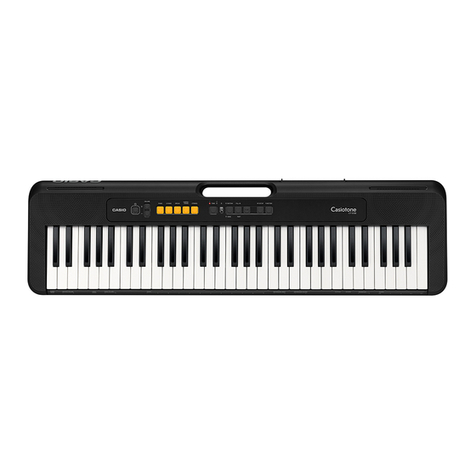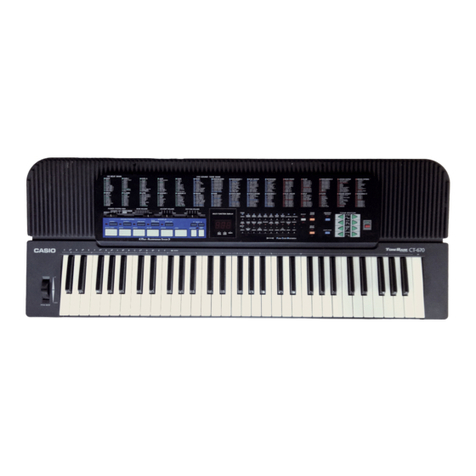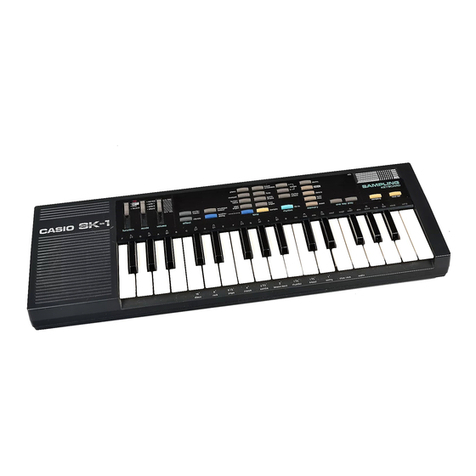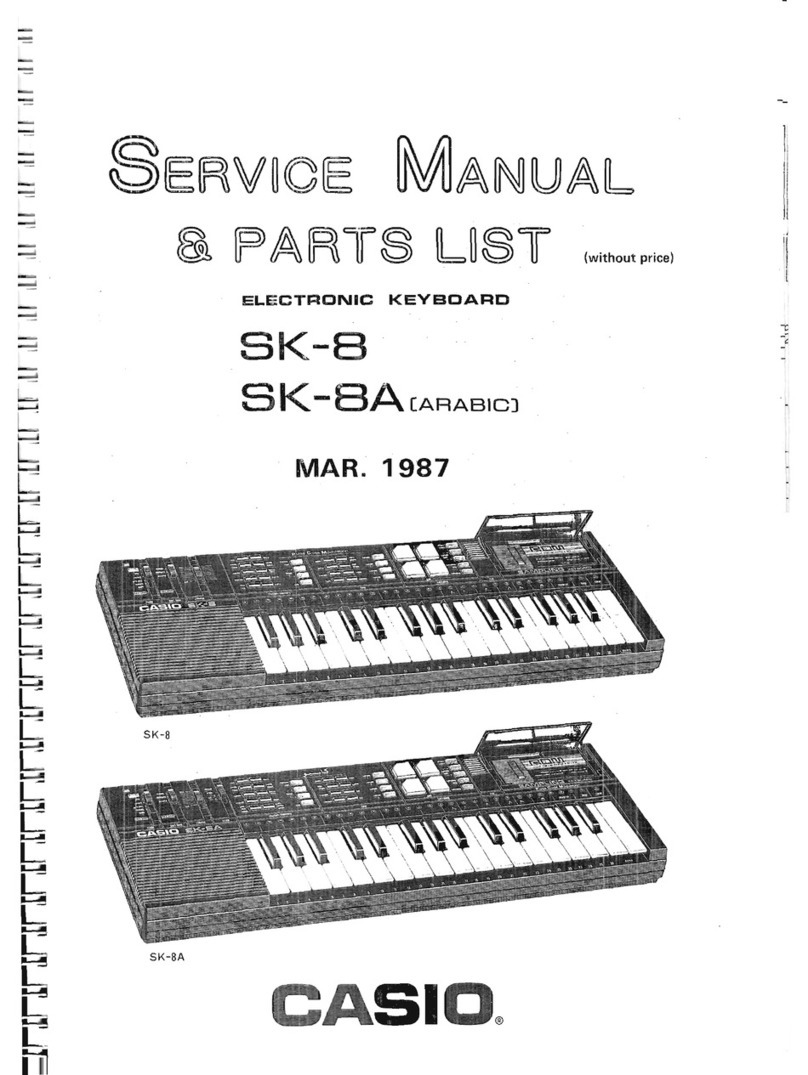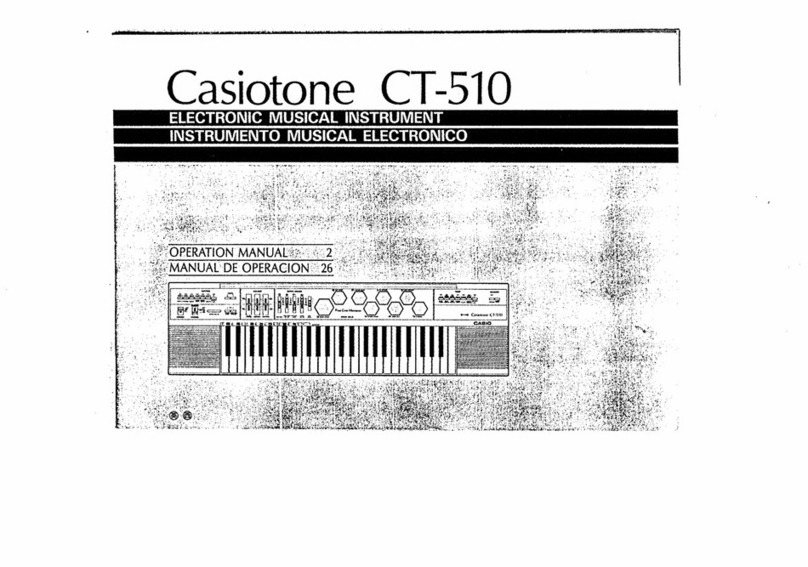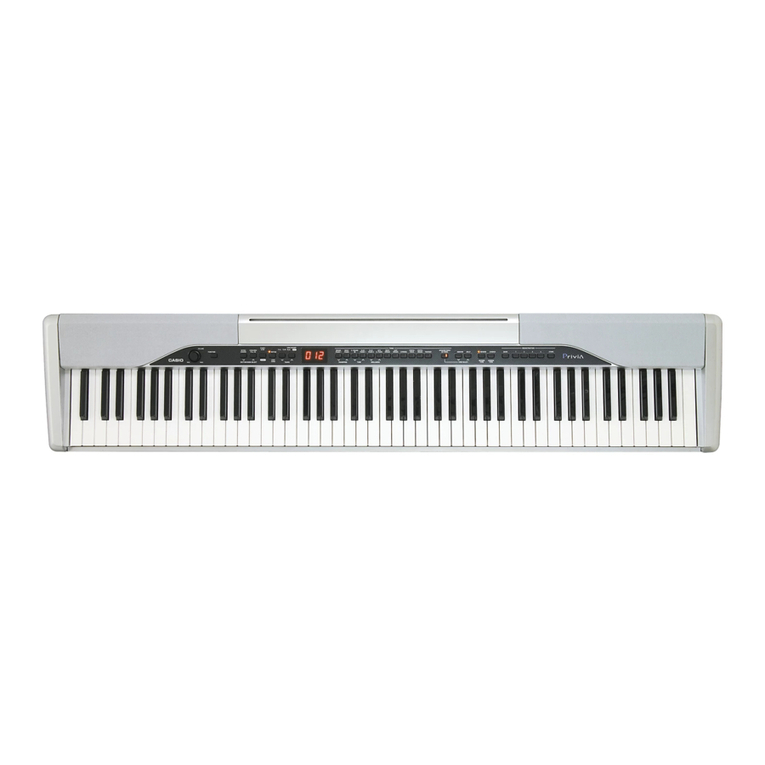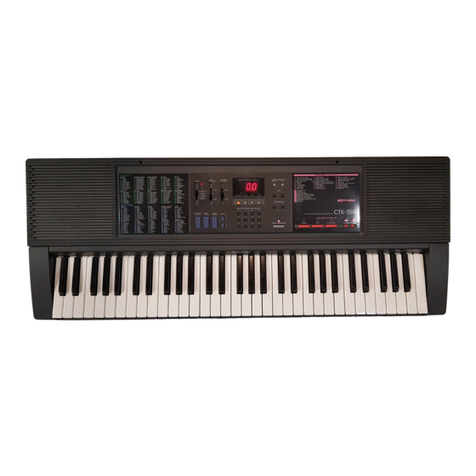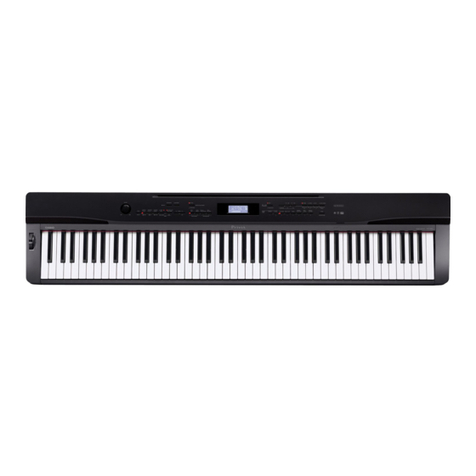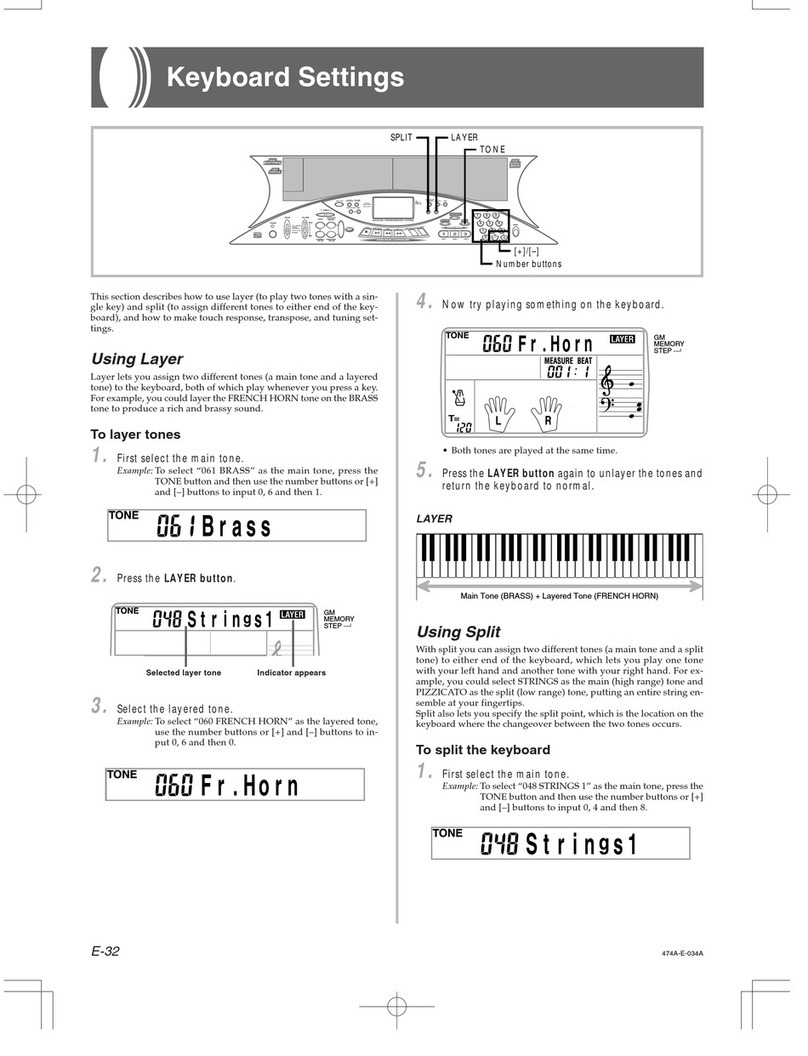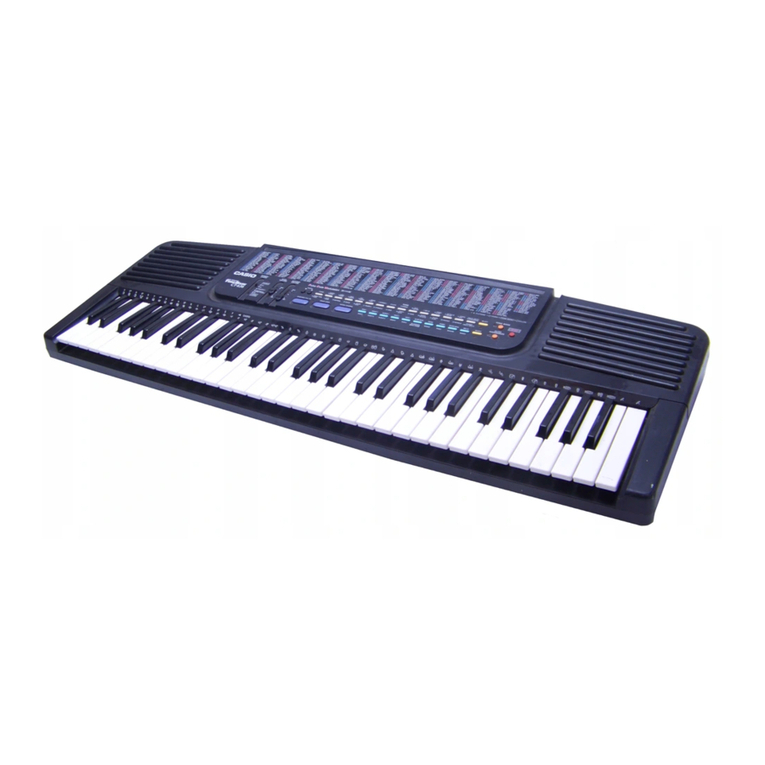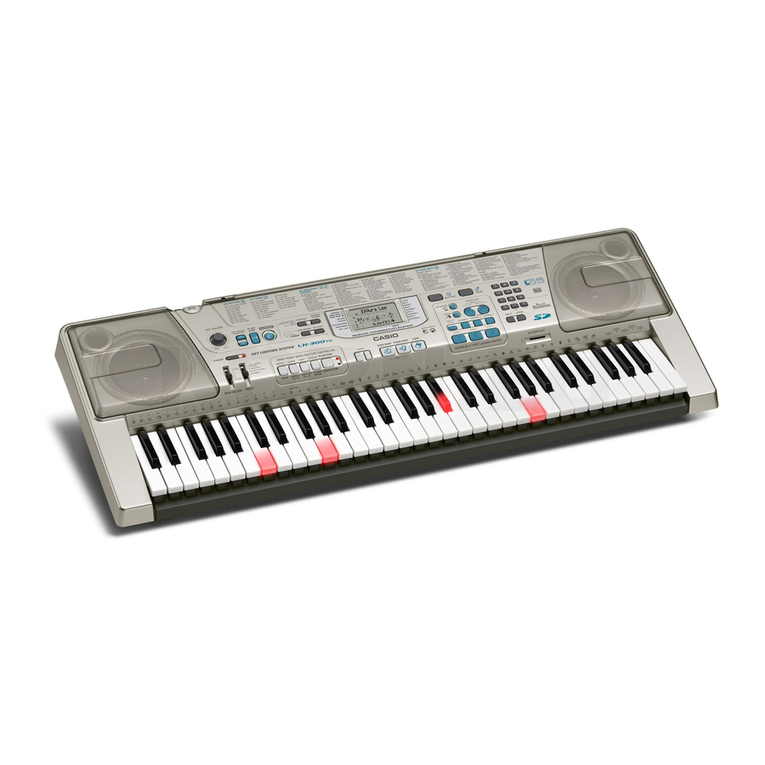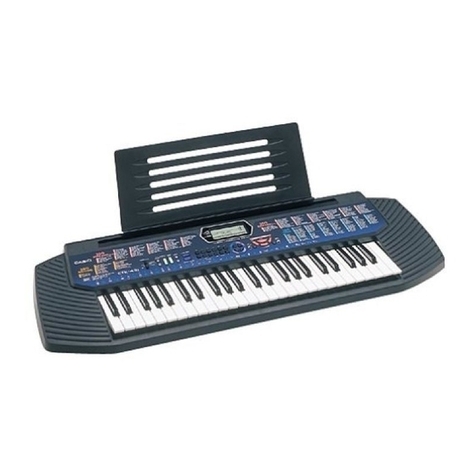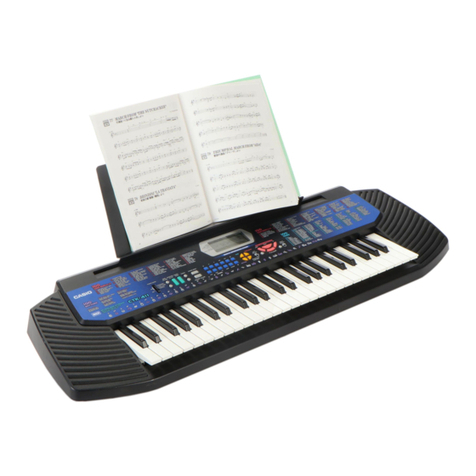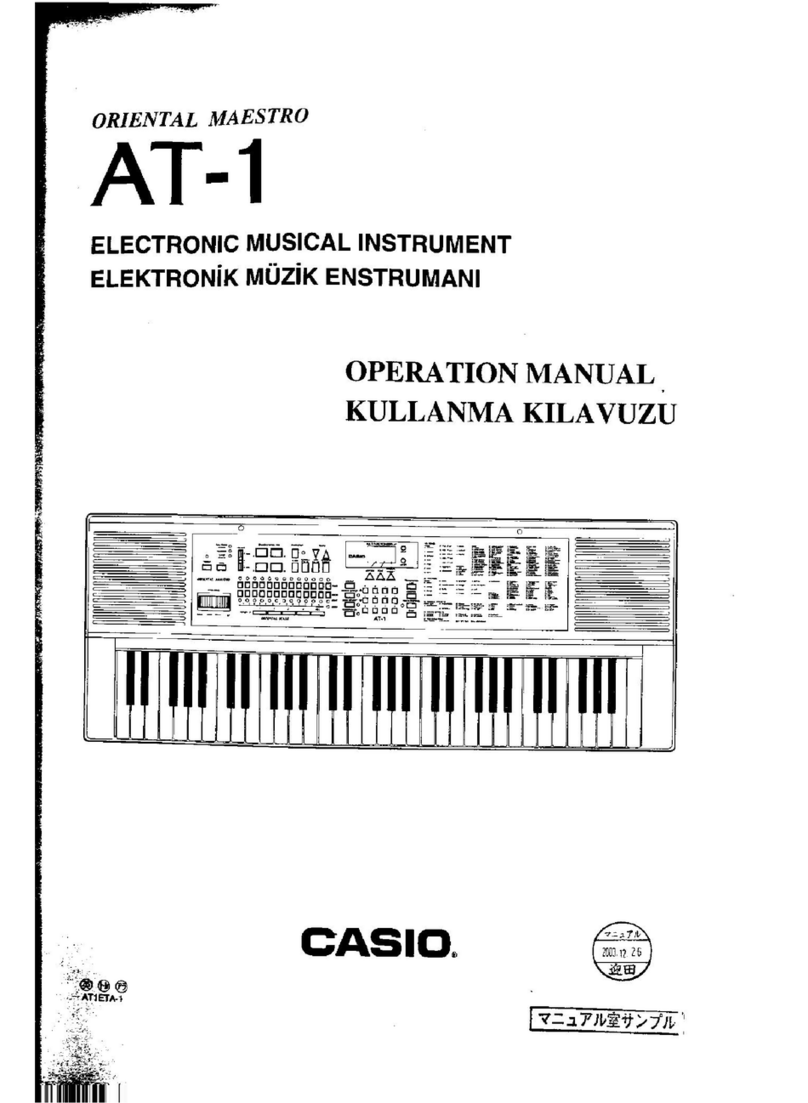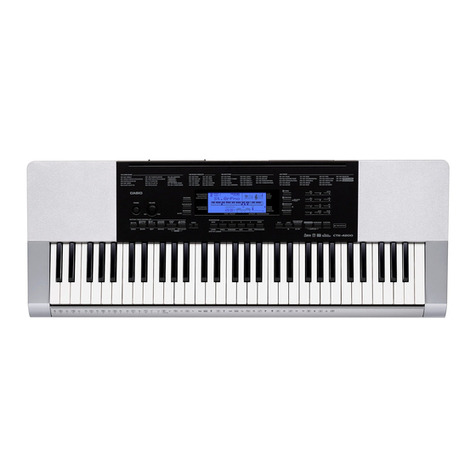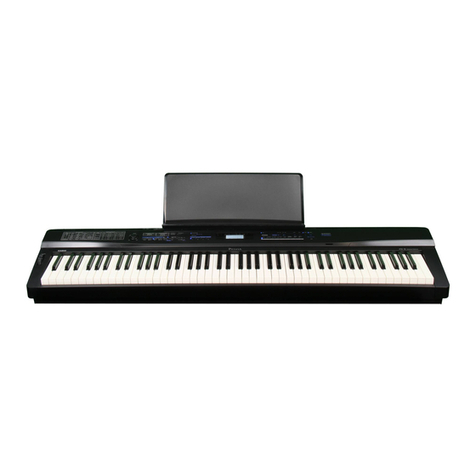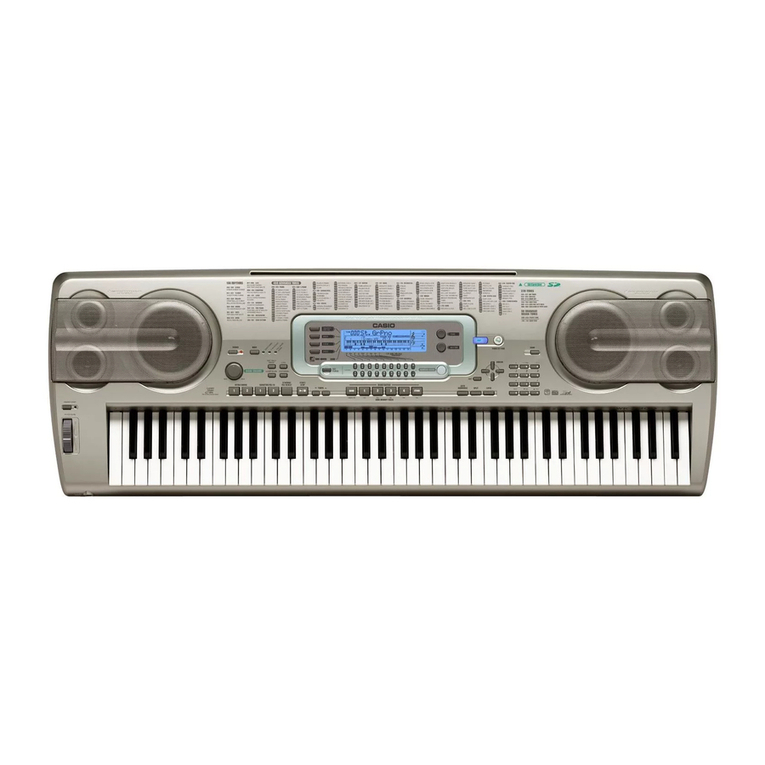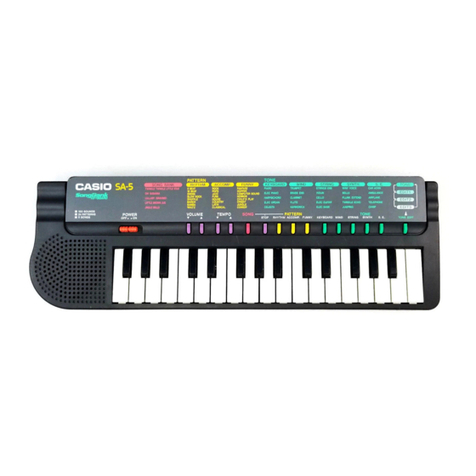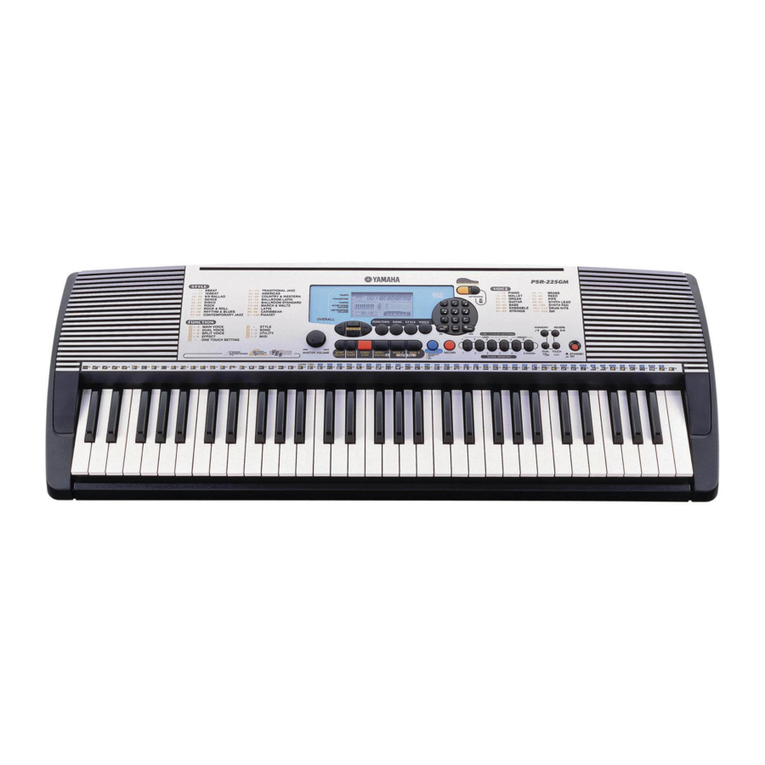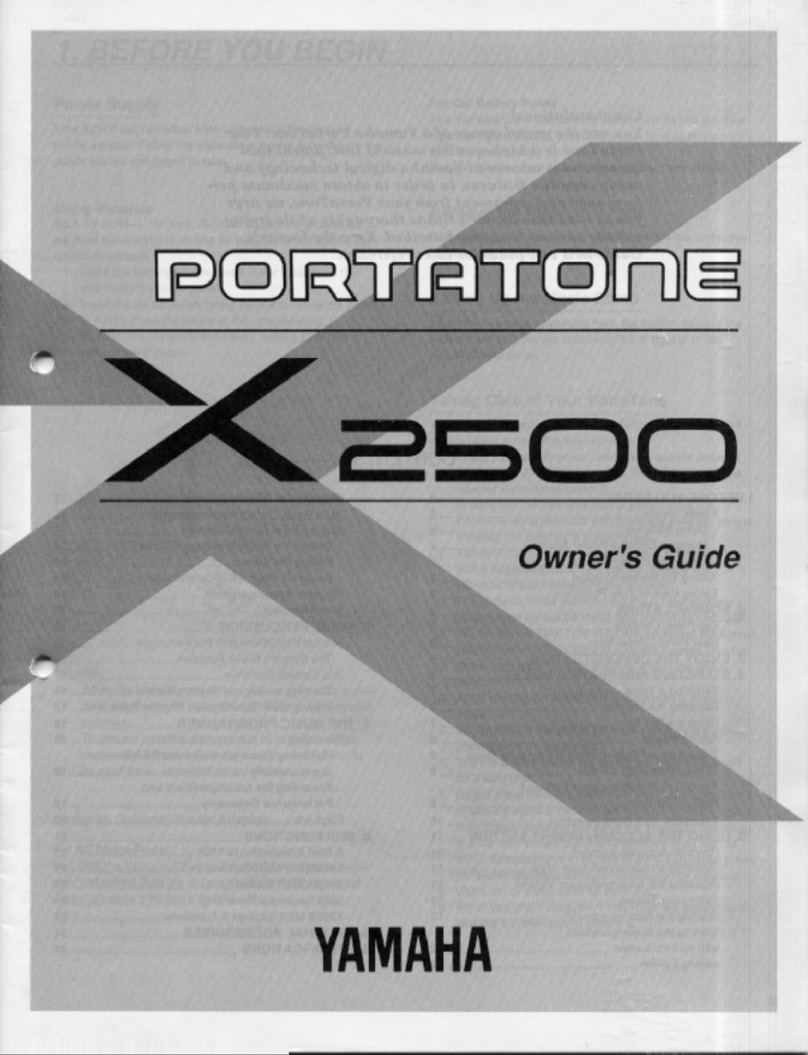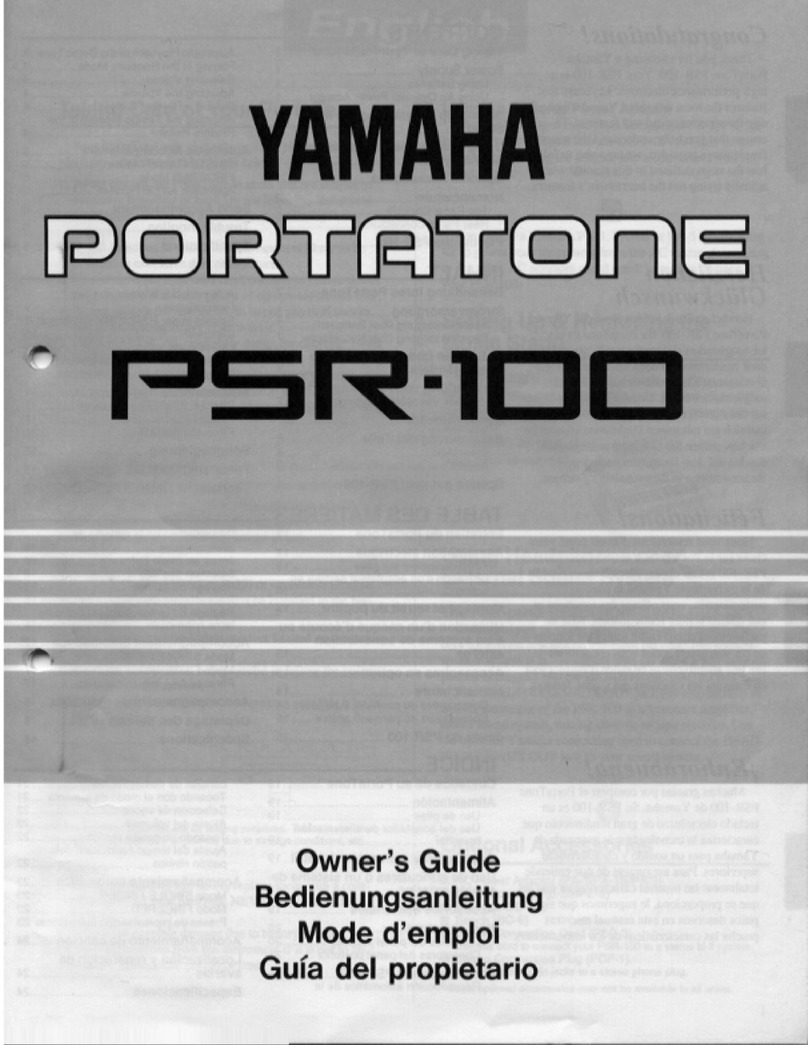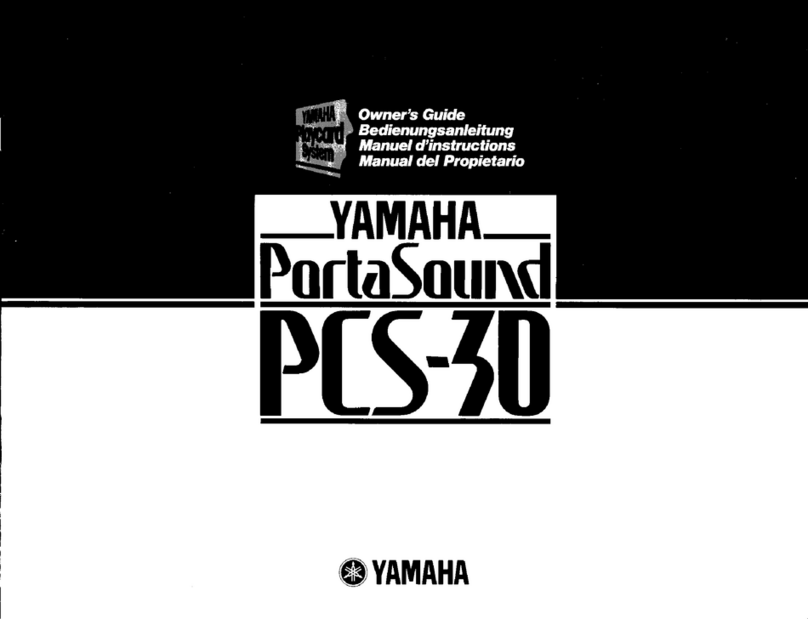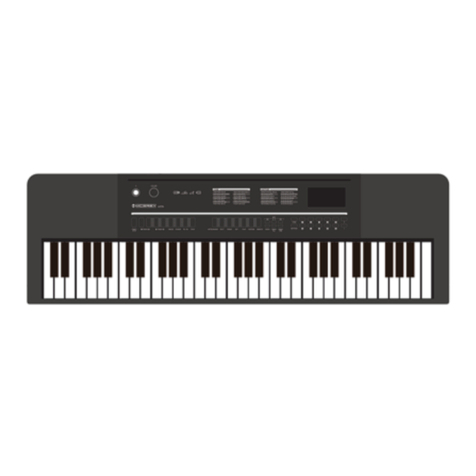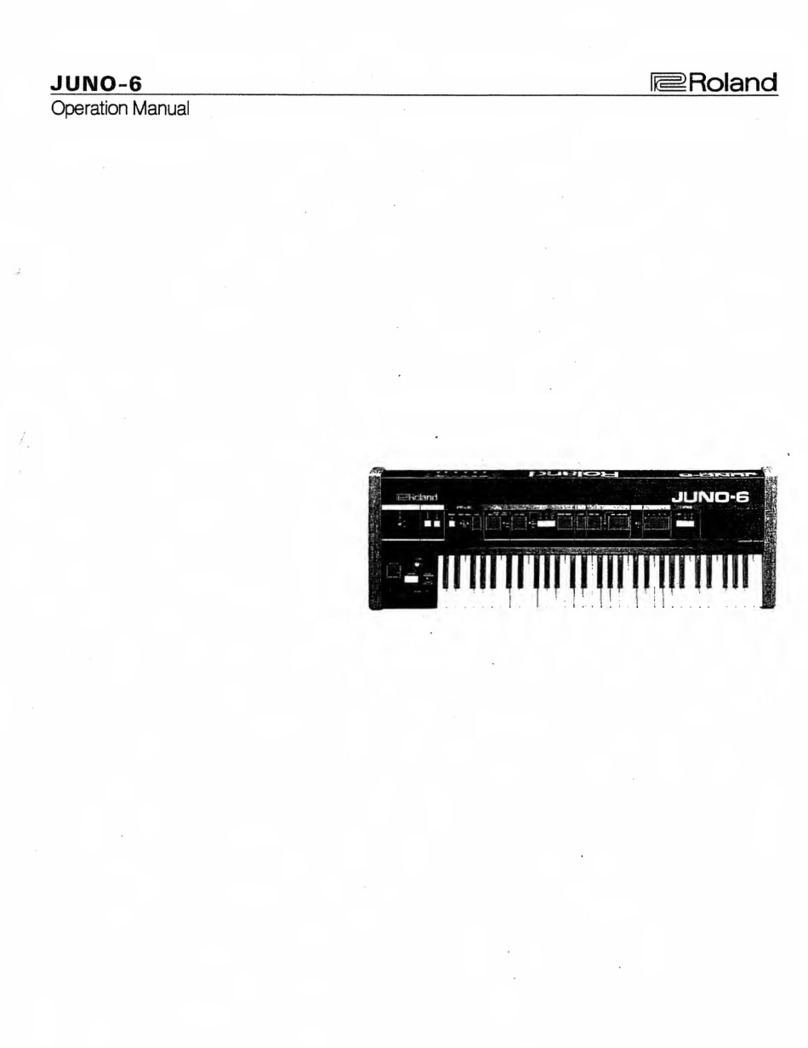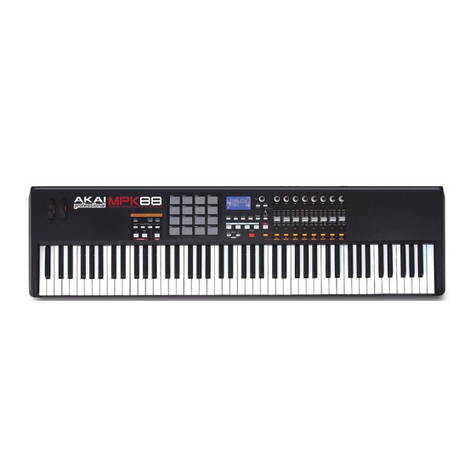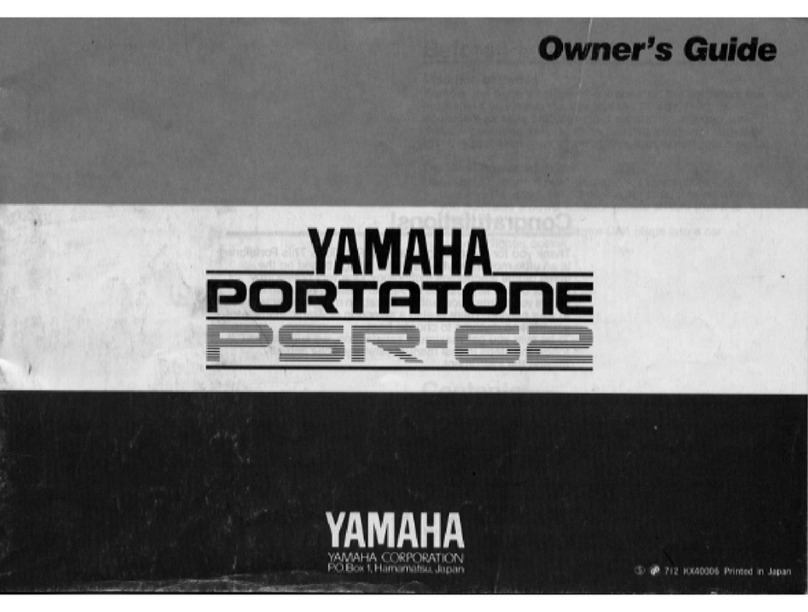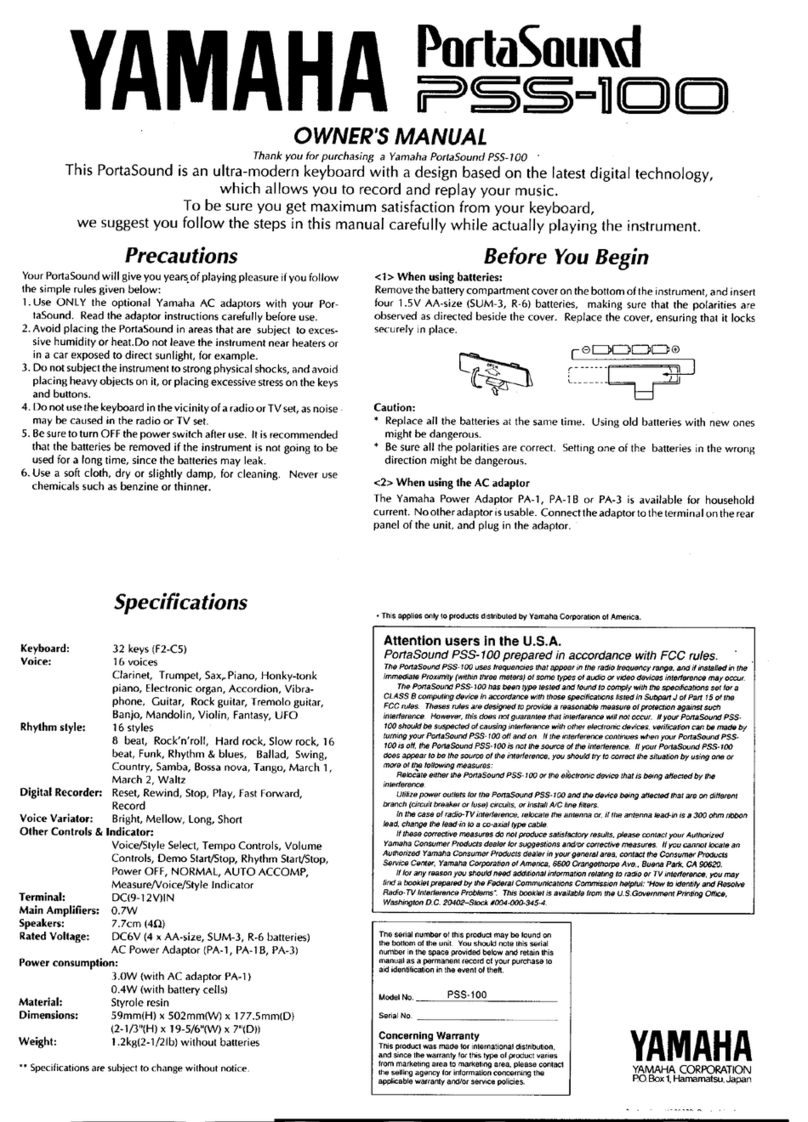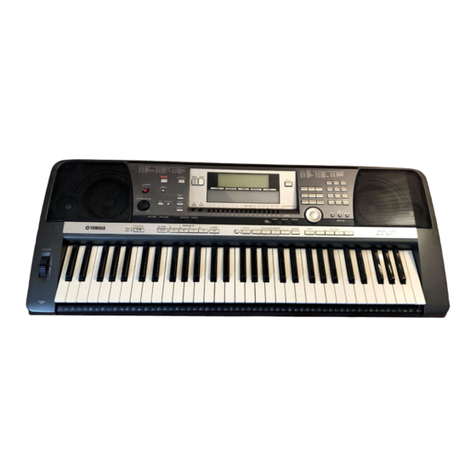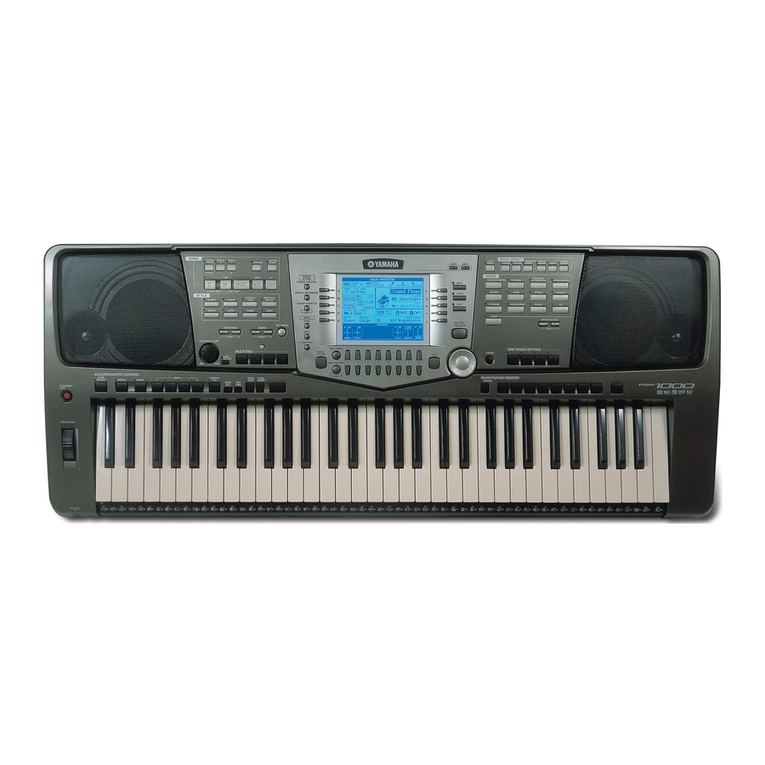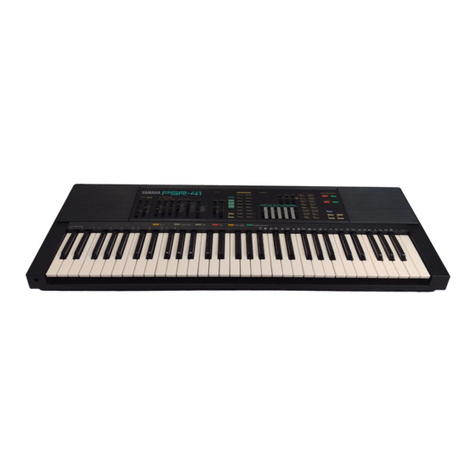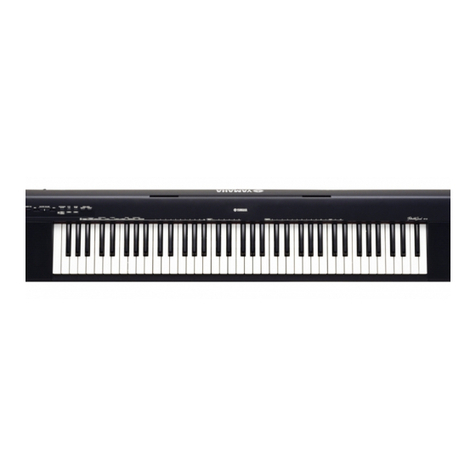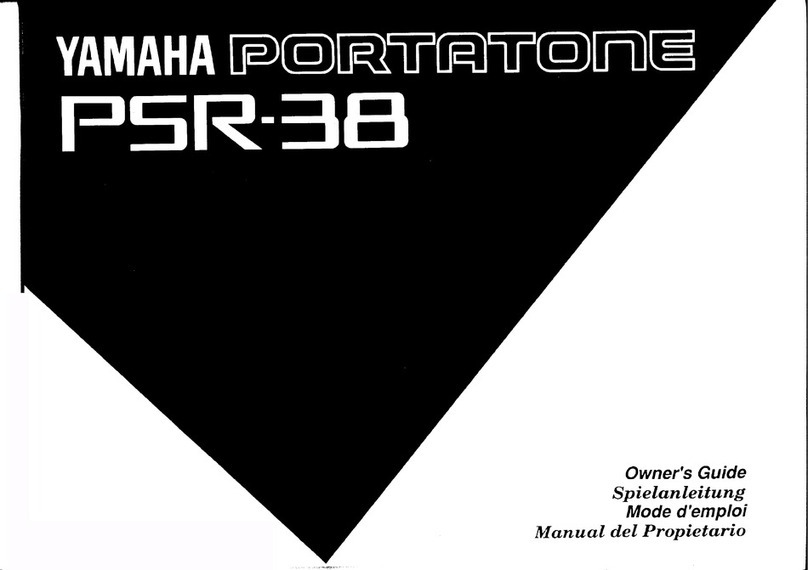
9
CTK-671 MIDI Implementation
10 .....ps : Parameter Set Number
Format : 0nnnnnnn, 0mmmmmmm (LSB, MSB)
This field is a 2-byte (LSB, MSB) value indicating the Parameter Set number
(00mmmmmmmnnnnnnn) being transferred.
11 .....<index> Parameter Index Number (option)
• When act = 0 (IPC) or 1 (IPR)
This field contains a supplementary number that points to data when parameters
are arrayed.
An <index> can be anywhere from one to four bytes long, and its role is defined on
a case-by-case basis in accordance with the category indicated by cat and the
song number indicated by Parameter ID.
In the case of preset number, part number, and key number parameters that all
have the same ID, for example, these <index> values would be used to specify
each of the parameters.
• When act = 2 (BDS) or 4 (HDS)
In this case, <index> is a 3-byte fixed field that shows a packet number (sequential
number starting from 00) identifying the packet into which the Parameter Set is
divided for transfer, and the size of the <data> field that follows the <index> field.
i[0] ... 0nnnnnnn Packet Number LSB (NNNNNNNnnnnnnn = Packet Number)
i[1] ... 0NNNNNNN Packet Number MSB
As explained in the <data> field section, 128 bytes can be send per
packet, so received data can contain <Parameter Set start address> +
<Packet Number> * 128.
i[2] ... 0LLLLLLL data length / 3
As mentioned in the explanation of the <data> field, the length of the
<data> field is always a multiple of 3, so the length value is divided by 3.
• When act = 3 (BDR) or 5 (HDR)
This field is always empty.
• When act = 7 (HDA, HDJ, HDE, NOP)
In this case, the <index> field length is fixed at 1 byte, and it indicates the control
messages used for handshaking as shown below.
See "Bulk Dump" for information about this operation.
i[0] = 0000cccc
cccc Control Message
------
0000 EOD Oneway/Handshake Bulk Dump End of Data (End of Data)
0001 HDA Handshake Bulk Dump Acknowledge (Handshake Data Receive
Successful)
0010 HDR Handshake Bulk Dump Reject (Handshake Data Rejected)
0011 HDE Handshake Bulk Dump Error (Handshake Data Error)
:
1111 NOP (No Operation)
12 .....<data> Parameter Data (when action = Parameter Change/Send)
• When act = 1 (IPR), 3 (BDR), 5 (HDR), or 7 (HDA, HDJ, HDE, NOP)
This field is always empty.
• When act = 0 (IPC)
Indicates the parameter itself. The length varies in accordance with the data size
indicated by the dlen field, as shown below.
This field is not included in a parameter request.
ddddd + 1 <data> fields
-----------------------------------+---------------------------
1 - 7 1
8 - 14 2
15 - 21 3
22 - 28 4
29 - 32 5
Each block of data is packed from the lowest order byte first. In the case of multiple-
byte data, the lowest weighted bit is the LSB of the first <data> block, and the
highest weighted bit is the MSB of the final <data> block. The following shows an
example of how data would be divided for transfer in the case of 32-bit data.
7 6543210
----------------------------------------------------------------------------------
data0: 0 [bit06] [bit05] [bit04] [bit03] [bit02] [bit01] [bit00]
data1: 0 [bit13] [bit12] [bit11] [bit10] [bit09] [bit08] [bit07]
data2: 0 [bit20] [bit19] [bit18] [bit17] [bit16] [bit15] [bit14]
data3: 0 [bit27] [bit26] [bit25] [bit24] [bit23] [bit22] [bit21]
data4: 0 0 0 0 [bit31] [bit30] [bit29] [bit28]
• When act = 2 (BDS) or 4 (HDS)
When a bulk data transfer operation is performed, the Parameter Set data to be
transferred is read sequentially in 16-bit units starting from the top address. Read
valuesare divided into 3-byte segments as shownbelow, and thensent in sequence.
The following is the conversion format, which is the same as individual parameter
16-bit transfer explained above.
Memory Image 16 bits
MSB: abcccccc
LSB: cddddddd
<data> Field 3 bytes
data0: 0ddddddd
data1: 0ccccccc
data2: 000000ab
Note, however, that a Parameter Set of 128 bytes or less can be sent using a
single packet, and anything greater than 128 bytes is divided among multiple
packets.
This means the maximum length of a <data> field is as shown below.
128/2 * 3 = 192 bytes
Only one Parameter Set can be transferred per session, and data from different
Parameter Sets cannot be mixed within a single packet, even when sending multiple
Parameter Sets.
Different Parameter Sets are always divided into separate packets.
13 .....<sum> Check Sum
• When act = 0 (IPC), 1 (IPR), 3 (BDR), 5 (HDR), or 7 (HDA, HDJ, HDE, NOP)
This field is always empty.
• When act = 2 (BDS) or 4 (HDS)
In this case, the <sum> field contains a value, which, when added to the total
value of the <data> field, makes the lower seven bits 0.
The receiving side checks if this is true, and performs error handling (re-request,
etc.) if it is not.
14 .....EOX : End of System Exclusive Message
Format : 11110111
End of System Exclusive message Status = F7H
2.2 Individual Parameter Operations
There are two individual parameter operations: Individual Parameter Transfer and
Individual Parameter Request.
During a single session, an Individual Parameter Request (IPR) can be responded to by
returning an Individual Parameter Change (IPC) or by simply sending an IPC.
Receipt of an IPR causes the corresponding parameter IPC to be sent back.
Receipt of an IPC causes a change of the corresponding parameter value.
An Individual Parameter Change can also be used to issue some command to the CTK-
671, and the Individual Parameter Request can be used to check CTK-671 status
information.
➝
